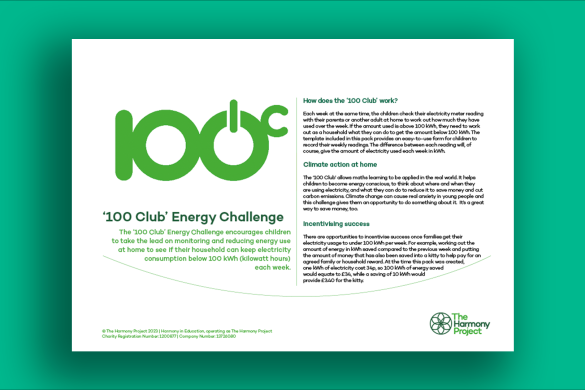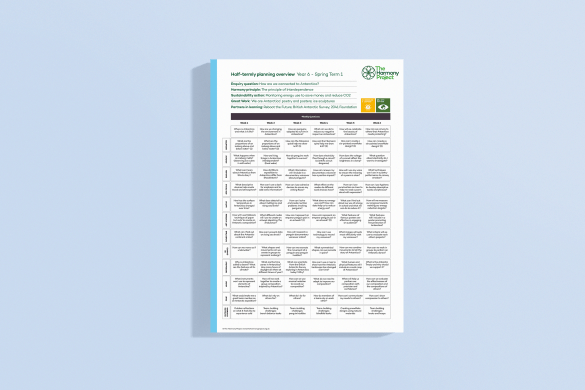‘100 Club’ Energy Challenge

A whole-school challenge to reduce energy usage at home
The ‘100 Club’ Energy Challenge encourages children to take the lead on monitoring and reducing energy use at home to see if their household can keep electricity consumption below 100 kWh (kilowatt hours) each week. It can be used to raise awareness of the importance of saving energy and to help develop sustainable, energy-saving behaviours across the school community and take learning at school into the home environment.
How does the ‘100 Club’ work?
Each week at the same time, the children check their electricity meter reading with their parents or another adult at home to work out how much they have used over the week. If the amount used is above 100 kWh, they need to work out as a household what they can do to get the amount below 100 kWh. The template included in this pack provides an easy-to-use form for children to record their weekly readings. The difference between each reading will, of course, give the amount of electricity used each week in kWh.
The ‘100 Club’ allows maths learning to be applied in the real world. It helps children to become energy conscious, to think about where and when they are using electricity, and what they can do to reduce it to save money and cut carbon emissions. Climate change can cause real anxiety in young people and this challenge gives them an opportunity to do something about it. It’s a great way to save money, too.
Incentivising success
There are opportunities to incentivise success once families get their electricity usage to under 100 kWh per week. For example, working out the amount of energy in kWh saved compared to the previous week and putting the amount of money that has also been saved into a kitty to help pay for an agreed family or household reward. At the time this pack was created, one kWh of electricity cost 34p, so 100 kWh of energy saved would equate to £34, while a saving of 10 kWh would provide £3.40 for the kitty.
Seasonal variation will have a significant impact on how much energy is used. In the darker winter months, it will be harder to keep consumption down. When run in a school or linked to a year group project of learning, it works particularly well to start the challenge at the beginning of the summer term when the days are getting longer and lighter. This will make the challenge easier to achieve.
Once families get below 100 kWh a week, and the children can show the figures on their form, they can be rewarded with a ‘100 Club’ certificate (also included in this pack). These can be given out in assemblies each week and it is noticeable how excited parents get when their children bring one home. It’s very much a challenge for all the family!
Some families will want to go further. It is possible to go below 50 kWh a week and for those energy-conscious families who want to push themselves to get their consumption below the 50 kWh mark, there is a 50 kWh certificate, too..
Celebrating energy saving
The key to making the ‘100 Club’ Energy Challenge a success is to keep it high profile so that parents and children alike are encouraged to take part each week and keep counting. It’s a lovely way to build community around a project that benefits children’s learning, saves money and takes action to address the climate crisis.
Underpinning the ‘100 Club’ is a message that it is good to be conservation conscious. In a world with so many people and a finite amount of resources, we all need to be consuming less and saving more.



